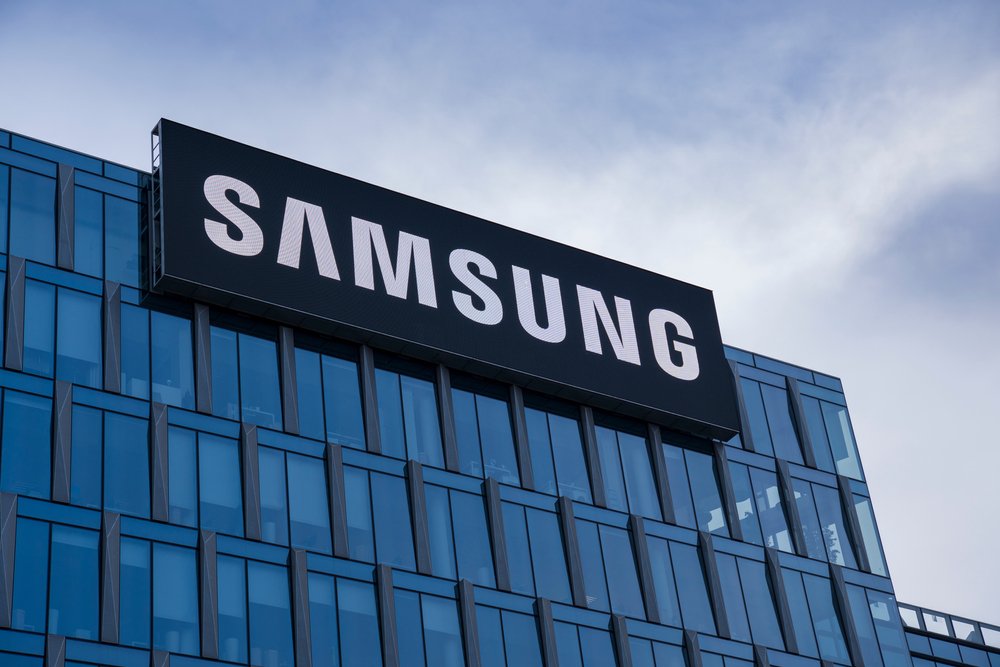In an industry where collaboration and outsourcing have become the norm, a surprising shift has taken place. As of 2025, only one company remains that handles the full cycle of smartphone production—from designing the chips to assembling the final product—all under one roof. This development has sparked curiosity and debate among tech enthusiasts and industry watchers alike. Prepared by the journalists at TheMors, this article dives into the details of this unique player, explores what this means for the future of smartphones, and answers the questions you might have about this rare feat. Let’s break it down step by step.
- What Does “Full Cycle Smartphone Production” Really Mean?
- The Lone Survivor: Who’s Behind This?
- Why Did Others Fall Behind?
- The Advantages of Full Cycle Production
- The Downsides: Is It Sustainable?
- What This Means for Consumers
- The Future of Smartphone Manufacturing
- How Does This Affect the Industry?
- Conclusion: What’s Next for Smartphone Fans?
- Frequently Asked Questions (FAQ)
What Does “Full Cycle Smartphone Production” Really Mean?
To understand why this is a big deal, let’s first look at what full cycle production involves. This means a company controls every stage: designing the hardware, manufacturing the components like processors and screens, assembling the phones, and even handling software development. Most smartphone brands today rely on a network of suppliers—think Foxconn for assembly or TSMC for chips. But one company has bucked this trend, keeping everything in-house.
I remember chatting with a friend who works in tech supply chains a few years back. He explained how fragmented the industry had become, with companies specializing in just one part of the process. “It’s like a car factory where one guy makes the wheels, another the engine, and someone else puts it together,” he said. Now, with only one firm managing the entire process, it’s a throwback to a time when vertical integration was more common. This shift raises questions about efficiency, cost, and innovation—topics we’ll explore further.
The Lone Survivor: Who’s Behind This?
Recent reports, including insights gathered by TheMors journalists, point to Samsung as the last company standing with a full cycle smartphone production model in 2025. Based in South Korea, Samsung has long been a giant in the tech world, but its ability to produce everything from semiconductors to finished Galaxy devices sets it apart. While companies like Apple design their phones and outsource manufacturing, or Xiaomi focuses on assembly with outsourced components, Samsung’s approach is different.

The company’s foundries in South Korea and Texas produce its Exynos chips, while its display division crafts the AMOLED screens that power many Galaxy models. Assembly lines in Vietnam and India then put it all together. This wasn’t always the case—Samsung has spent decades building this capability. I recall reading about their early struggles in the 1990s when they lagged behind competitors, only to invest heavily in self-reliance. That long-term vision has paid off, making them the only player with this level of control in 2025.
Why Did Others Fall Behind?
So, what happened to the rest? The answer lies in a mix of economics and strategy. Producing everything in-house requires massive investment—think billions of dollars in factories, research, and talent. Most companies found it cheaper to outsource to specialists. Apple, for instance, partners with Foxconn for assembly, while relying on TSMC for its A-series chips. This division of labor allows brands to focus on design and marketing, where they can shine.
But this approach has downsides. Supply chain disruptions, like those seen during the COVID-19 pandemic, exposed vulnerabilities. When chip shortages hit in 2021, companies without in-house production struggled to keep up. Xiaomi and Oppo, for example, faced delays because they depended on external suppliers. Samsung, with its own chip plants, weathered the storm better. Over time, the cost and complexity of maintaining full production pushed others to abandon it, leaving Samsung as the sole survivor.
I spoke to a small business owner in Kyiv who sells tech gadgets. He mentioned how reliant his suppliers are on Chinese factories. “If one link breaks, the whole chain stops,” he said. Samsung’s model avoids that risk, which might explain its edge in 2025.
The Advantages of Full Cycle Production
Running the whole show has clear benefits. First, it gives Samsung more control over quality. When every part is made in-house, there’s less chance of a faulty component slipping through. I’ve had phones with screen glitches from outsourced parts—frustrating when you can’t pinpoint the blame. Samsung can tweak its Exynos chips or screens to work seamlessly with its software, creating a tighter product.
Second, it cuts costs in the long run. While initial investments are steep, owning the supply chain reduces reliance on third-party pricing. During the 2022 chip shortage, outsourced components saw price hikes of up to 20%. Samsung avoided that by producing its own. This could mean more competitive pricing for consumers—or higher profits for the company.
Finally, it speeds up innovation. Without waiting on external partners, Samsung can test and roll out new features faster. The Galaxy S25, launched earlier this year, reportedly benefited from this, with AI enhancements integrated smoothly thanks to in-house chip design. For tech lovers, this means quicker access to cutting-edge tech.

The Downsides: Is It Sustainable?
But it’s not all smooth sailing. Full cycle production ties up a lot of capital. Building and maintaining factories across multiple countries isn’t cheap, and any misstep can hurt. If demand drops, Samsung could be left with unused facilities—something Apple avoids by scaling production with partners. I remember the 2008 financial crisis when many firms scaled back; Samsung’s size helped, but smaller players might not survive such a hit.
There’s also the risk of over-centralization. If a single factory faces a disaster—say, a fire or flood—it could halt production across the board. Outsourced models spread that risk. Plus, critics argue Samsung’s in-house focus might limit collaboration with outside innovators. Companies like Google, which outsources but works with top chip designers, often bring fresh ideas to the table.
Still, Samsung seems to be managing. Its global reach—factories in South Korea, the US, and India—spreads the risk. And with 2025 smartphone shipments holding steady at around 225 million units (based on recent industry data), the company shows no signs of slowing down.
What This Means for Consumers
For you, the buyer, this shift could mean better products—or at least more reliable ones. Samsung’s control over its supply chain might lead to phones that last longer or perform better out of the box. I’ve noticed my older Galaxy models hold up well compared to some rivals that use mixed components.
It could also influence pricing. With lower dependency on external costs, Samsung might offer mid-range phones like the Galaxy A series at sharper prices. But don’t expect bargains—profit margins are likely to stay healthy. Data from 2024 shows Samsung’s average selling price hit $356, up from previous years, suggesting a focus on premium models.
On the flip side, less competition in full cycle production might limit variety. If Samsung dominates this space, other brands could struggle to match its integration, potentially leading to a market where innovation slows outside its ecosystem. For now, though, consumers get a front-row seat to see how this plays out.
The Future of Smartphone Manufacturing
Looking ahead, 2025 might be a turning point. Some analysts predict other companies could try to replicate Samsung’s model, especially as trade tensions—like potential US tariffs on Chinese goods—push for more localized production. India, for instance, is ramping up manufacturing with firms like Foxconn assembling iPhones. But going full cycle? That’s a taller order.
Samsung’s success could inspire a revival of vertical integration, though it’s unlikely many will follow suit soon. The investment is too high, and the industry’s momentum favors specialization. I spoke to a tech blogger in Warsaw who thinks, “Samsung’s doing this because it can afford to. Others will stick to what works.” Still, if geopolitical risks grow, we might see more companies at least partially bringing production in-house.
For now, Samsung’s position gives it a unique edge. With full control, it can adapt faster to market shifts—whether that’s new chip tech or sustainable materials. TheMors will keep an eye on this story as it unfolds.
How Does This Affect the Industry?
This development ripples across the tech world. Suppliers like TSMC, which make chips for Apple and others, might lose some business if more companies consider in-house options. Assembly giants like Foxconn could see reduced demand, pushing them to diversify. I’ve read reports suggesting Foxconn is eyeing electric vehicle parts as a backup plan.
It also impacts competition. With Samsung as the only full cycle producer, brands like Xiaomi or Vivo might double down on software or design to stand out. This could lead to a more diverse market—less about hardware control, more about user experience. For industry watchers, it’s a fascinating shift to track.
Consumers might notice changes too. If Samsung leverages its advantage, we could see more integrated features—like AI tools tied to its chips—across its lineup. But it also raises questions about monopolistic risks. TheMors journalists will dive deeper into this in future articles, so stay tuned.
Conclusion: What’s Next for Smartphone Fans?
The fact that only one company now handles the full cycle of smartphone production is a game-changer. Samsung’s approach offers a mix of control, cost savings, and innovation potential, but it comes with challenges. For consumers, it promises better quality and possibly new features, though it might limit variety in the long run. As the industry evolves, TheMors will keep you updated with the latest insights.
Ready to learn more about the tech world’s biggest shifts? Head over to TheMors – Breaking News for the latest stories, expert analysis, and updates that matter. Whether it’s new gadgets or industry trends, we’ve got you covered—don’t miss out!
Frequently Asked Questions (FAQ)
What does full cycle smartphone production mean?
It means a company handles every step—designing chips, making screens, assembling phones, and developing software—all in-house, without relying on outside suppliers.
Why is Samsung the only company doing this in 2025?
Samsung invested heavily over decades to build its own factories and expertise, while others found outsourcing cheaper and more flexible. Trade disruptions and high costs pushed others to abandon full control.
Will this make Samsung phones cheaper?
Not necessarily. While in-house production can cut costs, Samsung might focus on premium models, keeping prices steady or even raising them. The 2024 average selling price of $356 suggests a premium push.
Could other companies start full cycle production?
It’s possible but unlikely soon. The investment is huge, and geopolitical risks might encourage partial in-house efforts, like in India, but full control remains rare.
What should I expect from Samsung phones now?
You might see better integration, like AI features tied to in-house chips, and possibly more reliable builds. However, variety from other brands could shrink if Samsung dominates.









